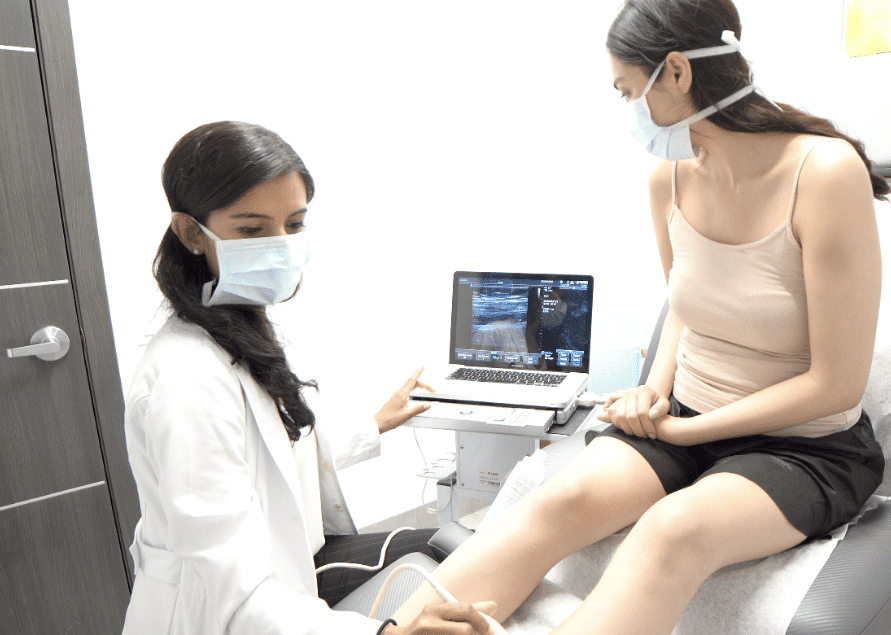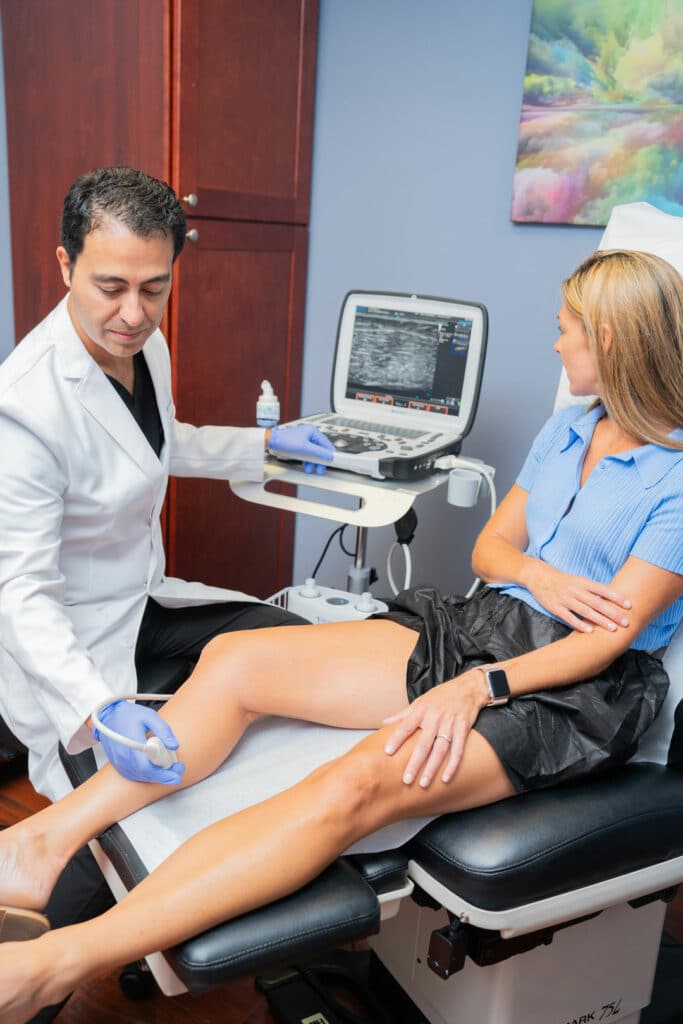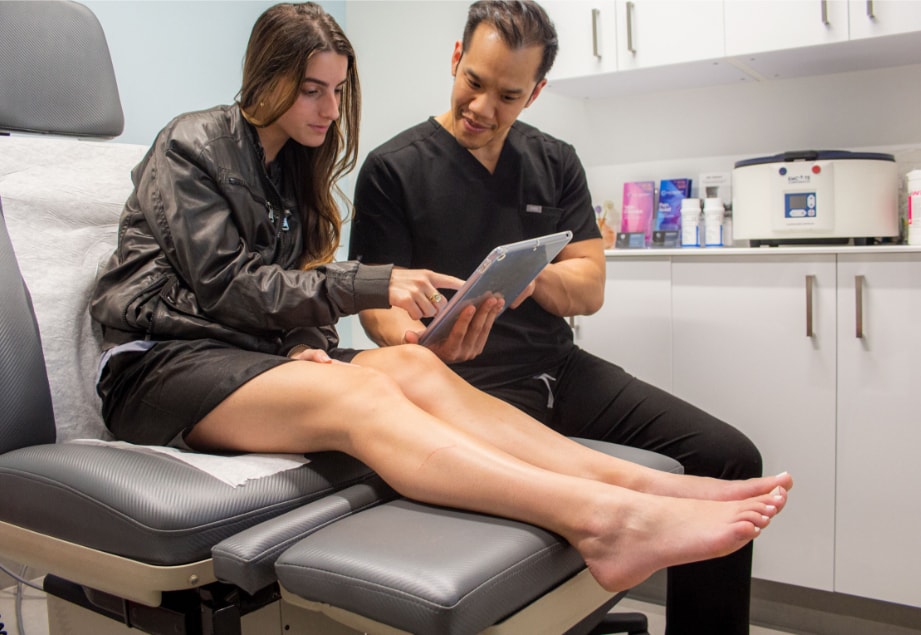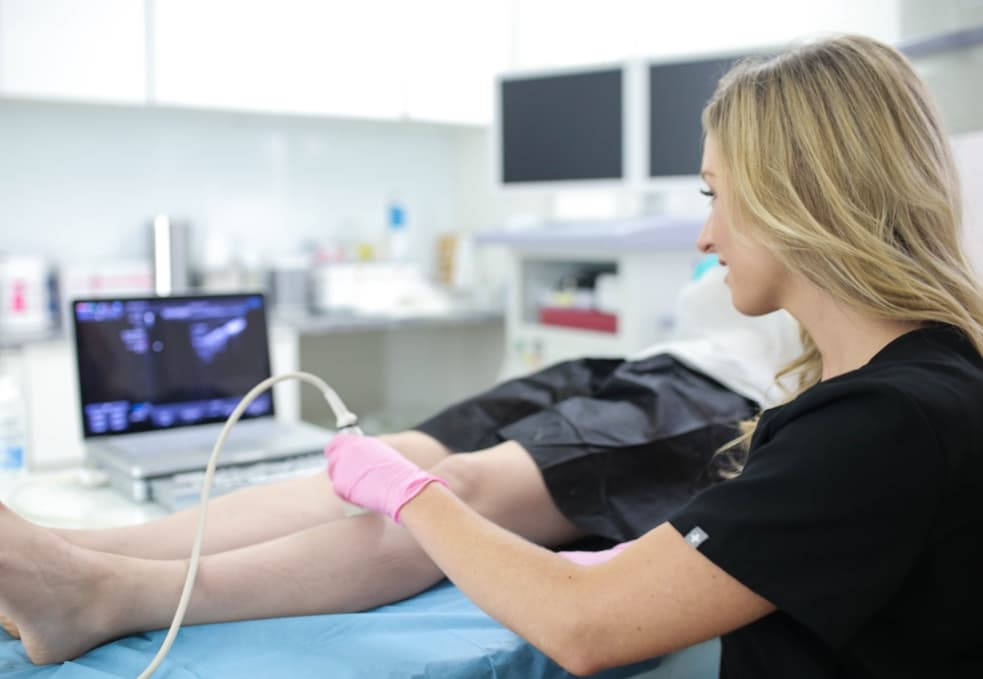When should you worry about varicose veins?
Most people assume that varicose veins are purely cosmetic issues. If you’re one of them, we have news for you: varicose veins can be dangerous. There’s no need to worry if you have varicose veins because they’re not immediately dangerous, but you do need treatment to prevent numerous long-term complications. Varicose veins are dense masses of twisted, tangled, and knotted rope-like blood vessels that protrude out of the skin’s surface. In most cases, varicose veins are symptomatic of underlying chronic venous insufficiency, a medical condition for which you definitely need treatment.
Maryland Vein Center is a state-of-the-art vein center specializing in cutting-edge treatments for varicose veins and underlying vein disease. If you have any of the signs and symptoms of varicose veins and chronic venous insufficiency, please visit our vein center to explore your treatment options. The early symptoms of vein disease might not seem serious, but the condition eventually worsens and causes numerous complications, such as leg swelling, leg ulceration, and deep vein thrombosis. Our vein doctors always diagnose and treat the root cause of varicose veins to ensure safe, consistent, and long-lasting results.
You can find our state-of-the-art vein center at 10215 Fernwood Rd, Suite 301, Bethesda, Maryland, just outside of Washington, DC, in Silver Spring. Please schedule an appointment if you have spider veins, varicose veins, or other signs and symptoms of vein disease.

Early signs and symptoms of vein disease:
- Leg Heaviness: The accumulation of blood in your leg veins will make your legs feel heavy and tired. Persistent leg heaviness that worsens at the end of the day is a strong sign of chronic venous insufficiency.
- Frequent Muscle Cramps: If you have persistent leg muscle cramps that worsen at night or after long periods of sitting or standing still, you may have underlying vein disease.
- Leg Pain: The accumulation of blood in leg veins may cause considerable leg pain, discomfort, and soreness at night or after long periods of inactivity.
- Leg Swelling: The accumulation of blood in leg veins leads to considerable leg swelling, especially around the feet and ankles.
- Restless Leg Syndrome: You may have an urgent and uncontrollable need to shake or move your legs, particularly at night or after sitting or standing still for long periods of time.
- Spider Veins: You may notice dense clusters of blood vessels just underneath your skin’s surface. The blood vessels may look like a dense network of spider webs.
Advanced complications of vein disease:
- Varicose Veins: You may develop large, prominent, and protruding blood vessels that bulge out of the skin’s surface, looking like a mass of twisted and tangled ropes. Varicose veins occur because of excessive blood accumulation in the leg veins.
- Skin Discoloration: Venous insufficiency prevents optimal blood circulation in the legs, which makes your skin look discolored, pale, and patchy red in certain areas.
- Skin Ulcers: You may develop skin ulcers (non-healing wounds) on your legs because small injuries and wounds can’t heal without proper blood circulation. This is a sign of advanced chronic venous insufficiency.
- Burst Veins: Venous insufficiency causes blood to flow backward and accumulate in the leg veins. The continued accumulation of blood in leg veins may lead to excessive vascular dilation until your varicose veins burst and cause profuse bleeding.
- Deep Vein Thrombosis: This is a dangerous medical condition wherein the accumulated blood in your leg veins may clot. The blood clots may eventually break and travel to the lungs, leading to a potentially fatal pulmonary embolism.
When should I seek medical attention for varicose veins?
You should seek medical attention for varicose veins as soon as possible. Varicose veins occur because of a dangerous underlying medical condition known as chronic venous insufficiency. Venous insufficiency is a chronic condition, which means it worsens with time. The longer you wait for treatment, the worse your varicose veins and vein disease symptoms will become. That’s why you must contact a reliable board-certified vein doctor if you notice spider veins, varicose veins, or other signs and symptoms of vein disease, such as leg swelling, muscle cramps in the legs, leg pain, skin ulcers, etc.
Are varicose veins life-threatening?
Varicose veins aren’t inherently life-threatening, but they indicate a medical condition that can be life-threatening in extreme cases. Chronic venous insufficiency is a medical condition that causes blood to flow backward and accumulate in the leg veins. If left untreated, the accumulated blood in the leg veins may clot (deep vein thrombosis). If the blood clots break, they may get carried into the lungs, leading to a potentially life-threatening condition known as pulmonary embolism. As such, the root cause of varicose veins can be life-threatening in rare and extreme cases.
How do I know if I have a blood clot in my varicose vein?
If you have a blood clot in your varicose veins, you may have trouble moving your legs because of extreme leg pain. You may also experience intense burning sensations in the affected regions of your legs, such as the area above the varicose veins. Other warning signs of deep vein thrombosis include excessive sweating, a warm feeling in your body, and a lightheaded feeling.
What is the most serious complication associated with varicose veins?
Deep vein thrombosis is the most serious complication associated with varicose veins. Deep vein thrombosis is a medical condition that leads to hardened blood clots in the deep veins that can travel to the lungs via the bloodstream, leading to a potentially fatal pulmonary embolism. The risk of deep vein thrombosis is low, but it can’t be ignored.





